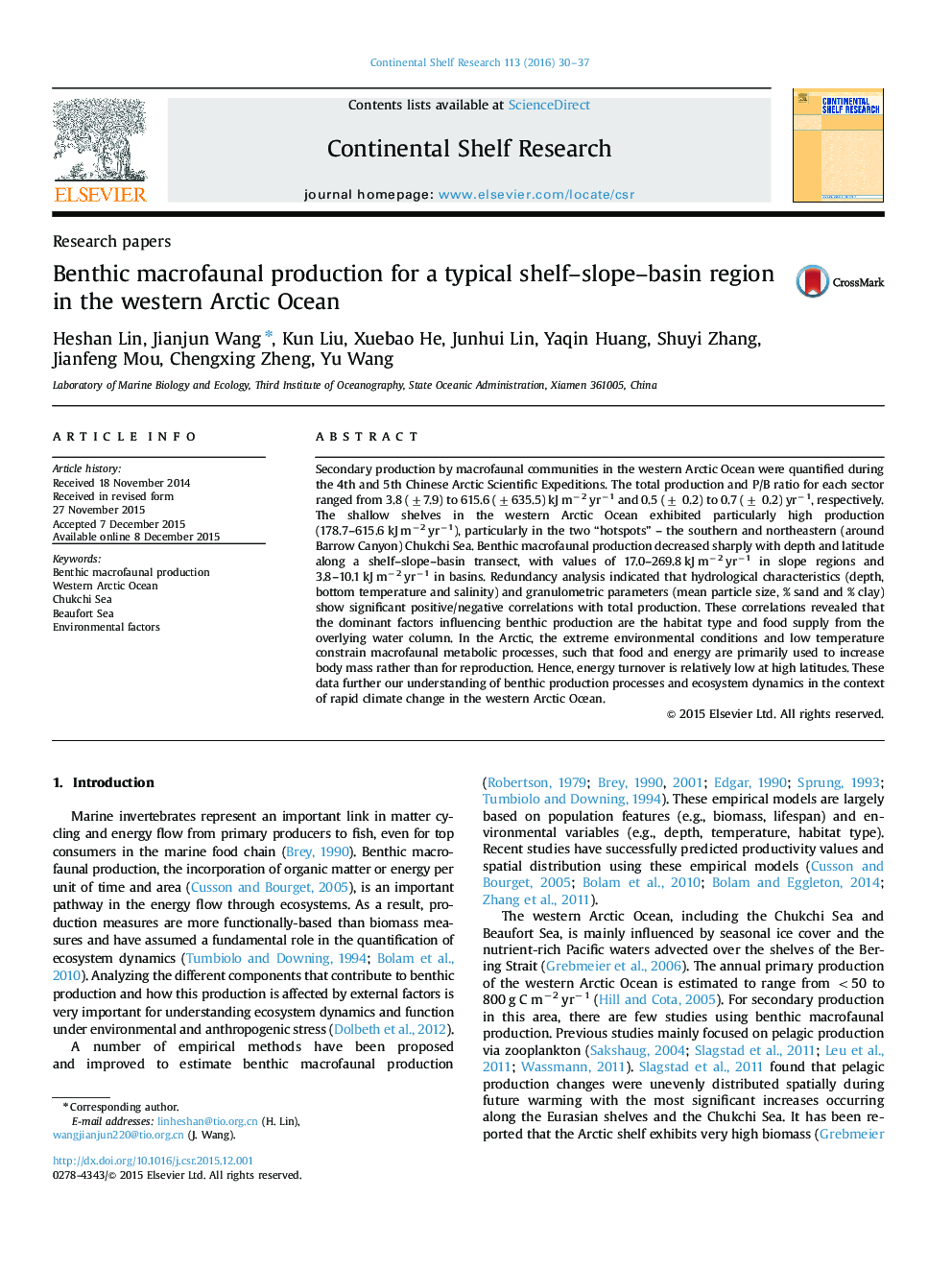| Article ID | Journal | Published Year | Pages | File Type |
|---|---|---|---|---|
| 4531654 | Continental Shelf Research | 2016 | 8 Pages |
•Benthic macrofaunal production in the majority of western Arctic Ocean was quantified.•Benthic macrofaunal production decreased sharply along a shelf–slope–basin transect.•Southern and northeastern Chukchi shelves exhibited particularly high production.•Habitat type and food supply significantly influence benthic production.•Extreme environmental conditions and low temperature limit the Arctic benthic productivity.
Secondary production by macrofaunal communities in the western Arctic Ocean were quantified during the 4th and 5th Chinese Arctic Scientific Expeditions. The total production and P/B ratio for each sector ranged from 3.8 (±7.9) to 615.6 (±635.5) kJ m−2 yr−1 and 0.5 (± 0.2) to 0.7 (± 0.2) yr−1, respectively. The shallow shelves in the western Arctic Ocean exhibited particularly high production (178.7–615.6 kJ m−2 yr−1), particularly in the two “hotspots” – the southern and northeastern (around Barrow Canyon) Chukchi Sea. Benthic macrofaunal production decreased sharply with depth and latitude along a shelf–slope–basin transect, with values of 17.0–269.8 kJ m−2 yr−1 in slope regions and 3.8–10.1 kJ m−2 yr−1 in basins. Redundancy analysis indicated that hydrological characteristics (depth, bottom temperature and salinity) and granulometric parameters (mean particle size, % sand and % clay) show significant positive/negative correlations with total production. These correlations revealed that the dominant factors influencing benthic production are the habitat type and food supply from the overlying water column. In the Arctic, the extreme environmental conditions and low temperature constrain macrofaunal metabolic processes, such that food and energy are primarily used to increase body mass rather than for reproduction. Hence, energy turnover is relatively low at high latitudes. These data further our understanding of benthic production processes and ecosystem dynamics in the context of rapid climate change in the western Arctic Ocean.
